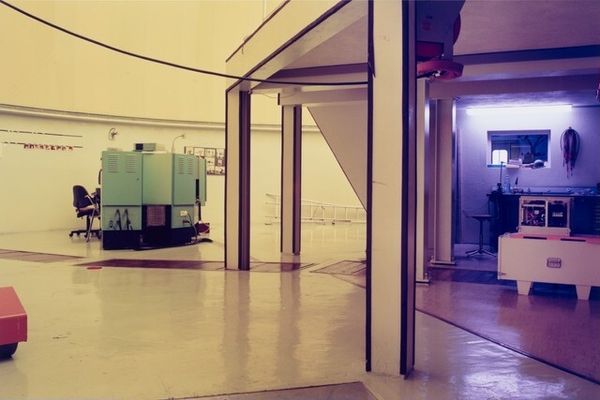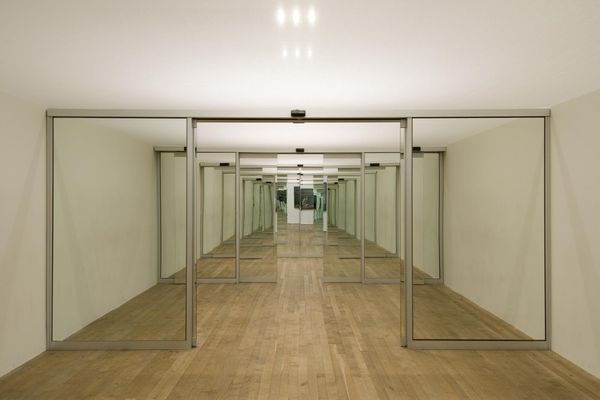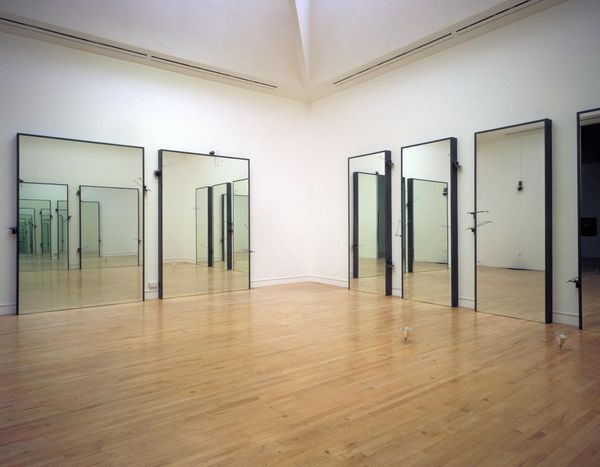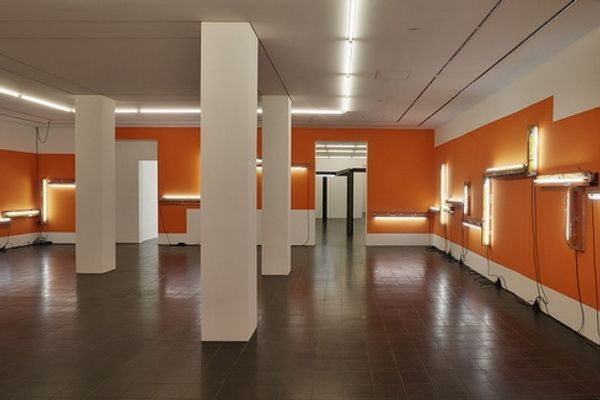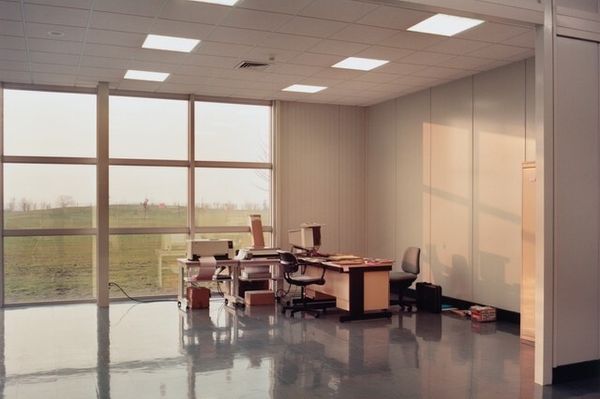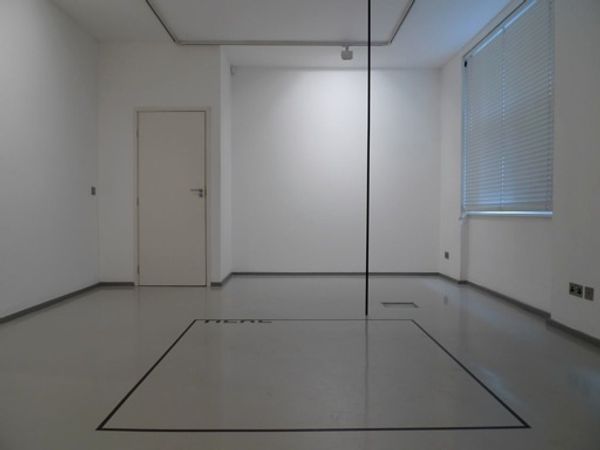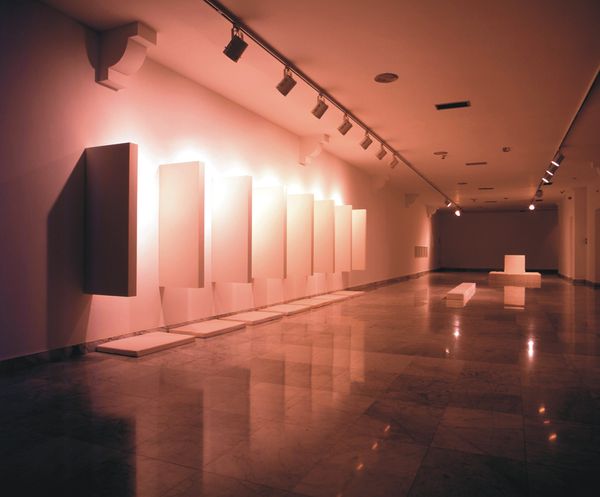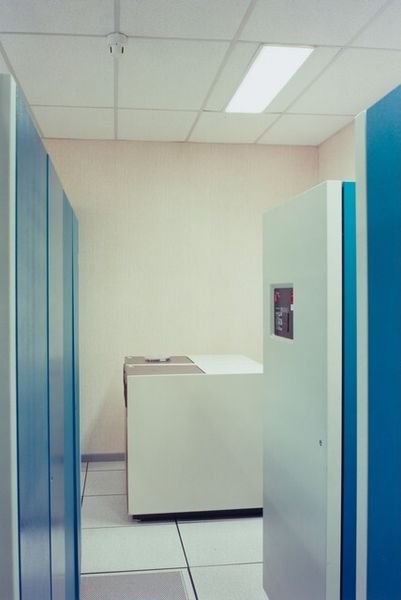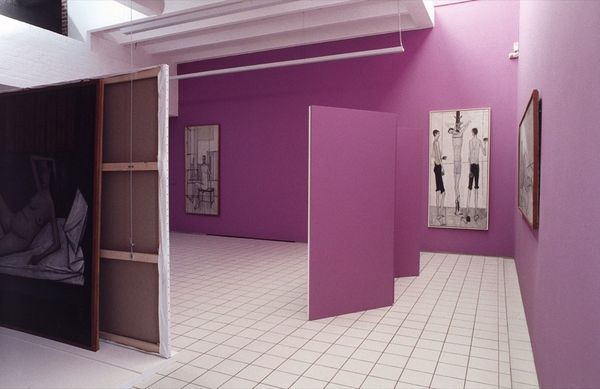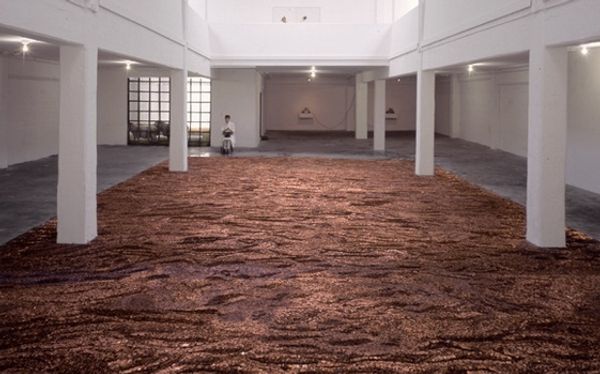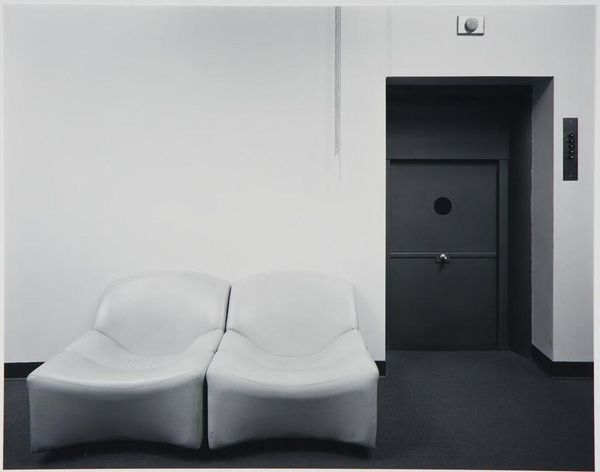
Rhône-Poulenc Pharmaceuticals, Dijon, France Possibly 1989 - 2006
0:00
0:00
photography, site-specific
#
conceptual-art
#
minimalism
#
photography
#
site-specific
Dimensions: image: 17.7 × 24.65 cm (6 15/16 × 9 11/16 in.) sheet: 28 × 35.7 cm (11 × 14 1/16 in.)
Copyright: National Gallery of Art: CC0 1.0
Curator: This is a photograph titled "Rhône-Poulenc Pharmaceuticals, Dijon, France" by Lewis Baltz, possibly created sometime between 1989 and 2006. It presents a minimalist aesthetic, seemingly capturing a site-specific moment. What strikes you first about this image? Editor: Coldness, primarily. And maybe sterility? The stark whiteness and metallic surfaces contribute to a very detached, almost clinical atmosphere. It feels like a space purged of any human element. Curator: Indeed. Baltz was known for his explorations of industrial landscapes and the impact of technology on society. Looking at the photograph through that lens, the very lack of human presence becomes a central element. The focus shifts to the architecture, the materials, and the implied processes that occur within this space. The arrangement, it seems, points to an architecture dictated by the demands of pharmaceutical production. Editor: I am more intrigued by these geometric shapes throughout the image, even what may be equipment supports rising from square steel trays and other things jutting out of walls like strange technological talismans, resonating in some ways with alchemical signs. The very cleanliness amplifies this sensation of a ritualistic preparation. Curator: It certainly invites questions about labor and consumption. Who built this space? What substances were produced here? Where were these materials sourced? This all touches on socio-economic and cultural elements embedded in minimalist art, doesn't it? Editor: Precisely! But let's not neglect the cultural memory encoded here. Pharmaceuticals conjure images of both healing and potential harm. Consider the recurring motif of whiteness – it signifies purity, but perhaps also concealment, creating a potent dichotomy. The photograph speaks to both our aspirations for scientific progress and anxieties about unseen implications. Curator: A compelling idea! It underscores how Baltz transforms an seemingly ordinary industrial scene into a site brimming with implied narratives, addressing production while quietly suggesting broader systems. Editor: Absolutely, what seemed like empty space initially has expanded in my mind. It makes you contemplate the values and anxieties of a society deeply invested in scientific advancement. Curator: Very well said. Baltz definitely left much to be inferred from the scene. Editor: An unnerving feeling is created with no one to guide us.
Comments
No comments
Be the first to comment and join the conversation on the ultimate creative platform.
